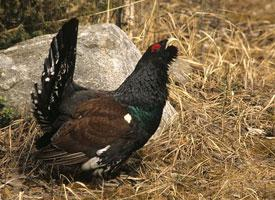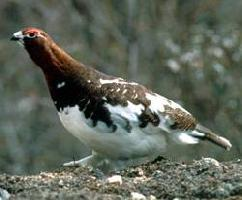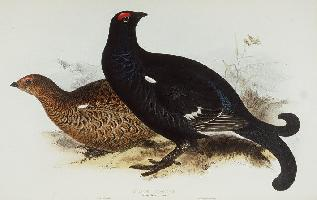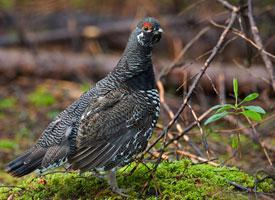
Váhy a míry
| Délka | od 50 do 60 cm |
|---|---|
| Hmotnost | od 1 do 1,5 kg |
Popis zvířete
The Western capercaillie, scientifically known as Tetrao urogallus, is a fascinating bird species that belongs to the grouse family. It is the largest member of the grouse family, making it a significant bird in terms of size and appearance. The Western capercaillie is renowned for its remarkable plumage, distinctive mating rituals, and its preferred habitat in the coniferous forests across Europe and Asia. This bird has captivated the interest of ornithologists and nature enthusiasts alike due to its unique characteristics and behaviors.In terms of appearance, the Western capercaillie exhibits pronounced sexual dimorphism, meaning males and females differ significantly in size and coloration. The male capercaillie is considerably larger than the female, with some males reaching up to 100 cm in length and weighing over 4 kg. They are characterized by their dark, glossy black feathers with a metallic sheen, which contrasts sharply with the white undersides and a striking iridescent blue sheen on the breast. Their tail feathers are fan-shaped, which they prominently display during courtship rituals. In contrast, females are much smaller, measuring around 60 cm in length and weighing about half as much as males. They have a more camouflaged appearance, with mottled brown plumage that allows them to blend seamlessly into their forest habitat.
One of the most intriguing aspects of the Western capercaillie's behavior is its mating ritual, known as "lekking." During the breeding season, which typically occurs in the spring, males congregate in specific areas of the forest known as leks, where they perform elaborate displays to attract females. These displays include a series of deep, resonant calls that can be heard over long distances, as well as physical posturing and feather fluffing. The males' efforts to outcompete one another for the attention of the females make these lekking rituals a dramatic and noisy spectacle.
The habitat of the Western capercaillie is closely tied to old-growth coniferous forests, where they find both the food and the cover they need to thrive. These birds are primarily ground-dwelling, foraging on the forest floor for a diet that includes leaves, buds, berries, and insects. During the winter months, they rely heavily on pine needles, which constitute a significant portion of their diet. The capercaillie's preference for dense forest habitats with a mix of tree species is crucial for their nesting and roosting needs, as well as for providing protection from predators.
Conservation efforts for the Western capercaillie have become increasingly important as their habitats face threats from logging, fragmentation, and human disturbance. These birds are sensitive to changes in their environment, and their reliance on specific forest ecosystems makes them vulnerable to habitat loss. Conservation initiatives focus on protecting and restoring the old-growth forests that capercaillies depend on, as well as implementing measures to minimize human impact on these critical habitats.
In summary, the Western capercaillie is a majestic and intriguing bird, distinguished by its size, striking appearance, and unique behaviors. Its role in the forest ecosystem and the fascinating mating displays make it a species of great interest in the natural world. However, the preservation of this remarkable bird requires ongoing conservation efforts to ensure that it continues to thrive in its natural habitat for generations to come.
Podobná zvířata
Nové fotografie zvířat
Top 10 zvířat
- Chinese water dragon (Physignathus cocincinus)
- Galápagos tortoise (Geochelone nigra complex)
- Dolphin gull (Leucophaeus scoresbii)
- Japanese macaque (Macaca fuscata)
- Colombian red howler (Alouatta seniculus)
- Sea urchins (Echinoidea)
- Moustached guenon (Cercopithecus cephus)
- Diana monkey (Cercopithecus diana)
- Common reed warbler (Acrocephalus scirpaceus)
- Common house mosquito (Culex pipiens)


